#roundleaf sundew
Text


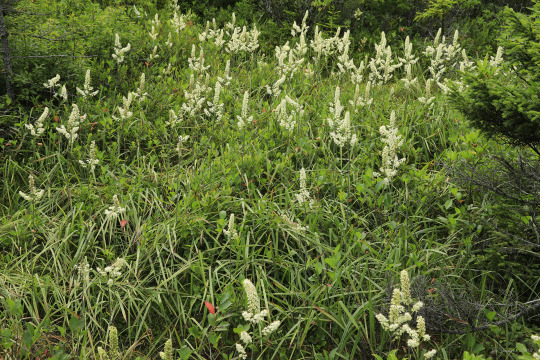
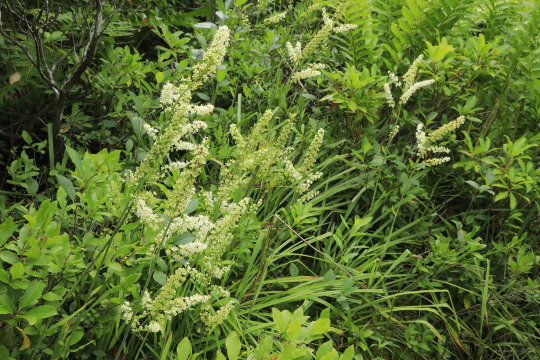






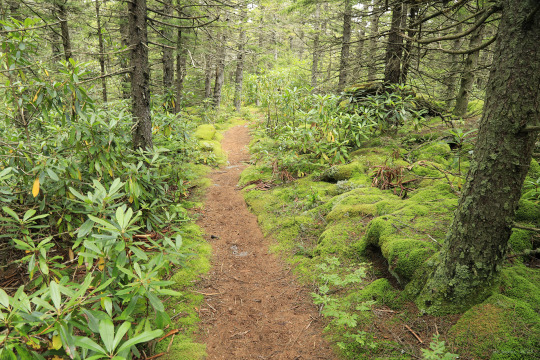


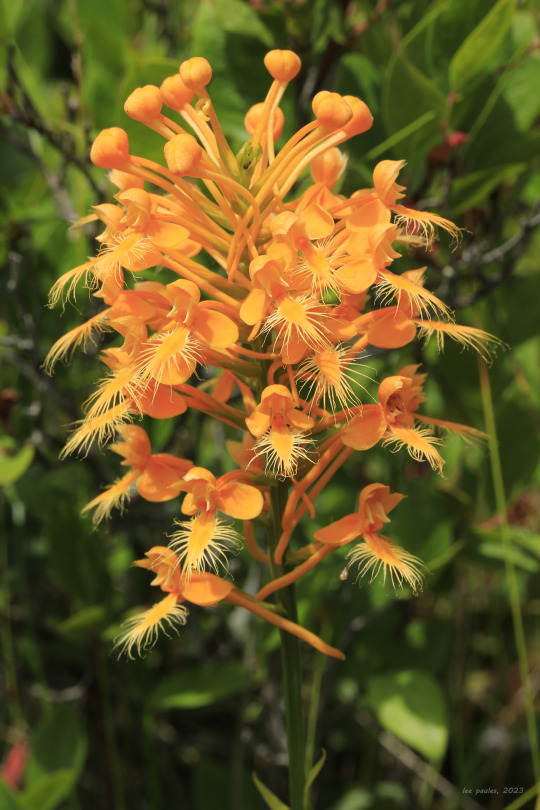

Hazy mid-summer day on the Sods, Part 1.
Photos are from the South Prong Trail, heading towards Roaring Plains. The pine barrens death camas (Stenanthium leimanthoides) growing in the bogs and seeps of the Plains is simply stunning this year. Such a toxic little beauty - death incarnate. Also, the mountain angelica (Angelica triquinata) is getting ready to bloom - I think of this tall, Appalachian endemic as the mid to late summer counterpart of cow parsnip. And how about that fabulous orange-fringed orchid (Platanthera ciliaris), which is just now reaching peak bloom in our high-elevation mountain bogs? The showy perennial is more commonly referred to as yellow-fringed orchid, but I have no clue why; every plant I've found in this neck of the woods has a hue similar to a Sunkist navel orange.
#appalachia#vandalia#west virginia#wildflowers#flora#summer#monongahela national forest#allegheny mountains#roaring plains#dolly sods#amphibian#northern green frog#pine barrens death camas#small green wood orchid#club-spur orchid#small cranberry#round-leaved sundew#roundleaf sundew#dewdrop#false violet#mountain angelica#filmy angelica#orange-fringed orchid#yellow-fringed orchid#bog goldenrod
206 notes
·
View notes
Photo

Roundleaf Sundew by Tero Karppinen on Flickr.
This work is licensed under CC BY 2.0.
#Drosera rotundifolia#roundleaf sundew#round-leaved sundew#common sundew#carnivorous plants#green#red#cultivated#landscape#foliage#creative commons#creativecommonsplants#curators on tumblr#botany#plants#plant blog#plant photography
50 notes
·
View notes
Text
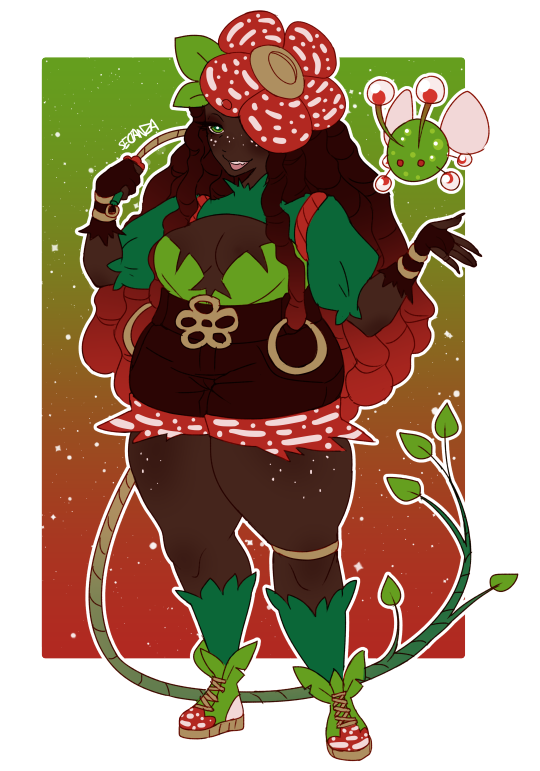
Rali Fresa and Dewlala for Magical March day 10: jungle !! They're based on rafflesia and sundew respectively :>
#magical march#magical march 2023#character design#digital art#artists on tumblr#magical girl#rafflesia#roundleaf sundew
9 notes
·
View notes
Video
n314_w1150 by Biodiversity Heritage Library
Via Flickr:
The flora homoeopathica :. London :Leath & Ross,1852-1853.. biodiversitylibrary.org/page/6163800
#Botany#Medical#Homeopathy#Materia medica and therapeutics#Materia medica#Vegetable#Pictorial works#Missouri Botanical Garden#Peter H. Raven Library#bhl:page=6163800#dc:identifier=http://biodiversitylibrary.org/page/6163800#flickr#drosera rotundifolia#Round-leaved sundew#sundew#roundleaf sundew#common sundew#botanical illustration#scientific illustration
2 notes
·
View notes
Text

So pretty
1 note
·
View note
Text
Ümaralehine huulhein
Drosera rotundifolia L., Droseraceae
Huulhein, huulerogi, kõrvalusikas, kärbsepüüdja, mokahein, ohatserohi, päevalill, silmarohi, sooummur
Roundleaf sundew


Ümaralehine huulhein kasvab turbarabades, siirdesoodes mätastel, niiskel liivalsel pinnasel.
Ravimina kasutatakse taime ürti.
Huulheina kasutatakse läkaköha, palaviku ja vistrike vastu ning uriini erituse soodustamiseks.
Korjatakse juulis ja augustis.
Kirjeldus
Ümaralehine huulhein kasvab turbarabades, siirdesoodes mätastel, niiskel liivalsel pinnasel. Ta on mitmeaastane 5-25cm kõrgune taim niiditaoliste juurtega.
Vars (õieraag) püstine, lihtne, enamasti üksikuna, vahel mitmena ühel lehekodarikul. Lehed juurmise kodarikuna, lehelaba ümmargune või piklik, alt roheline, pealt kattunud hulga punakate näärmekarvadega, mille tipul on sagedasti tilgake vedelat eritist; kõik lehed on pikarootsulised, lamavad; õisik - pikk ühekülgne kobar; kroonlehti 4, valged, piklik-ümmargused, 4-6mm pikad, ulatuvad tömpidest tupplehtedest üle.
Esineb Eesti NSV-s kõikjal, aga hõredalt, peamiselt rabades tihedast taimkattest paljastunud kohtadel.
Õitseb juunist augustini.
Tuntud lihasööja taim.
Alternatiivid
Praegu on lubatud ümaralehise huulheina asemel kasutada ka pikalehist huulheina (Drosera anglica Huds.) ja vahelmist huulheina (D. intermedia Hayne). Pikahelisel huulheinal on lehed talbjas-lineaalsed, ulatuvad keskmiselt poole varre kõrguseni. Esinev raba vesistel kohtadel - umblaugastel, älvestel. Vahelmisel huulheinal on lehed talbjad või äraspidimunajad, õisiku raag peaaegu niisama pikk kui lehed, alusel kaarjalt tõusnev. Esineb siirdesoodes ja kuivemates rabades, peamiselt Lääne-Eestis.
Praegu on lubatud ümaralehise huulheina asemel kasutada ka pikalehist huulheina (Drosera anglica Huds.) ja vahelmist huulheina (D. intermedia Hayne).
Pikahelisel huulheinal on lehed talbjas-lineaalsed, ulatuvad keskmiselt poole varre kõrguseni. Esinev raba vesistel kohtadel - umblaugastel, älvestel.
Vahelmisel huulheinal on lehed talbjad või äraspidimunajad, õisiku raag peaaegu niisama pikk kui lehed, alusel kaarjalt tõusnev. Esineb siirdesoodes ja kuivemates rabades, peamiselt Lääne-Eestis.
Ravim
Ravimina kasutatakse taime maapealset osa, ürti - herba Droserae. Praegu tarvitatakse apteekides seda droogi vähe, kuid viimasel ajal on huvi huulheina vastu uuesti tõusnud.
Ürti kogutakse taime õitsemise ajal, juulist ja augustis. Taim tõmmatakse välja juurtega. Juured ühes eelmise aasta lehekodariku jäänustega eemaldatakse ja ürti kuivatatakse varjus tuuletõmbulises kohas.
Droogiks on terved taimed või purunenud taimeosad tumepunaste lehtedega, mis on kaetud pikkade pruunide näärmekarvadega. Lõhna ei ole, maitse on hapukasmõru. Niiskust võib droog sisaldada kuni 15%, peenikesi taimeosi, mis läbivad 1 mm2 suuruste avadega süela, kuni 5%; kõrvalisi lisandeid minimaalselt.
Droog sisaldab oksünaftokinooni derivaate, peamiselt plumbagiini (0,36-0,90%) ja droserooni, valku lõhustavat pepsiinitaolist ensüümi, õun-, sidrun-, äädik- ja sipelghapet.
Plumbagiin on veeauruga destilleeritav ja takistab juba lahjenduses 1:50 000 mõnede patogeensete mikroorganismide kasvu.
Toimed
Eriti tugevat toimet avaldab plumbagiin läkaköha pisikutesse. Droog on spasmolüütilise toimega, millega seletub ta köhavaigistav toime.
Huulheina värsket mahla tarvitati välispidiselt vistrike ja koeranaelte raviks. Omal ajal kasutati huulheina kui palavikuvastast ja uriini eristumist soodustavat ravimit.
Läkaköha puhul tarvitatakse järgmist leotist: 25 grammi huulheina droogi kahe klaasi keeva vee kohta; võetakse 3 korda päevas, 1 supilusikatäis korraga. Läkaköha puhul kasutatakse ka alkoholleotist (tinktuuri), mida võetakse 3 korda päevas 10-20 tilka.
Taime levi

Allikad
Tammeorg, J., Kook, O. & Vilbaste, G. (1973). Eesti NSV Ravimtaimed. Tallinn: Valgus.
Eesti taimede levikuatlas 2020
3 notes
·
View notes
Text
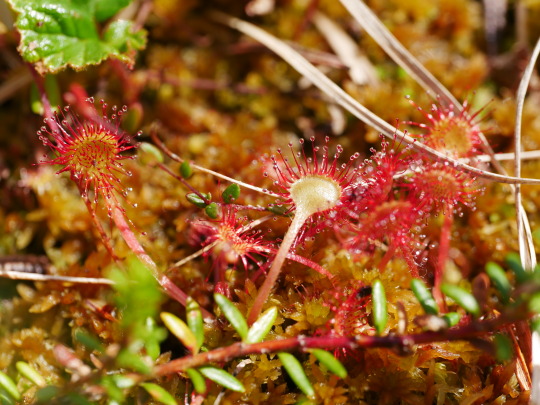
Roundleaf sundew Drosera rotundifolia
1 note
·
View note
Text
Insert the appropriate expletives here I'm trying to communicate high! enthusiasm I just learned there are several populations of roundleaf sundew not too far away from me? Sundews are some of my favorite organisms period and I was told they weren't here but! nope! They are here in the coastal marshes, and inland marshes further away. So Drosera rotundifolia I am going to gaze upon and venerate your tiny good selves ASAP!
9 notes
·
View notes
Photo

Roundleaf Sundew by Mark Freeth on Flickr.
This work is licensed under CC BY 2.0.
#common sundew#roundleaf sundew#round-leaved sundew#Drosera rotundifolia#carnivorous plants#square#cultivated#foliage#green#pink#black#creative commons#creativecommonsplants#curators on tumblr#botany#plants#plant blog#plant photography#flickr
36 notes
·
View notes
Photo

Drosera rotundifolia L. by Luís Gaifém Orvalhinha Roundleaf sundew Lamas de Olo 2017 41.3672,-7.79112 https://flic.kr/p/2gbhhZb
0 notes
Text
Webb Mills Bog
Webb Mills Bog
Webb Mills Bog
Webb Mills Bog
Webb Mills Bog
Webb Mills Bog
Webb Mills Bog
Webb Mills Bog
Webb Mills Bog
Webb Mills Bog
Webb Mills Bog
Webb Mills Bog
Webb Mills Bog
Webb Mills Bog
Webb Mills Bog
Webb Mills Bog
Webb Mills Bog
Webb Mills Bog
Webb’s Mill Bog is located within the Greenwood Wildlife Management Area in southern NJ.
I made this hike by following their small trail and boardwalk system, you get an up close view of some very interesting plants. From wild orchids, to pitcher plants, to things that looked sticky, you will find them all just inches from where you stand on the boardwalk.
The overall area of the bog is small, but very nice.
Making the overall length of trails rather small as well. The “public” trails here are a mix of a skinny (not wide) wooded trail, and a boardwalk going over the bogs. Once you find the entrance (see directions for that info), you will follow the skinny, somewhat overgrown trail going through the woods for about 300 feet. The trail turns right a left a few times with a few small side trails. Not too far into main trail, you will see the grey boardwalk through the woods. Just use common sense, following the most worn trails and you will eventually find the boardwalk. The boardwalk section is also very skinny. The It is an oval in shape, around 400 feet long. When we visited in August/2018, the railings were all very warped, but the decking / boardwalk itself was in great shape. Following the boardwalk will allow you get a close up view of the flora of the bog. And it is easy to know what you are looking at with the addition of informational signs all around the boardwalk.
How to get there:
To get there I eventually got onto Cr-539 south. We were looking for the Webbs Mill Branch bridge and the Greenwood Wildlife Management Area sign. The trail head is across the street and about 40 feet south of the WMA sign.
Webb’s Mill Bog is home to many endangered bog plants such as orchids, sundews, pitcher plants, and bladderworts.
Trees:
Acer rubrum (red maple)
Chamaecyparis thyoides (Atlantic white cedar)
Juniperus virginiana (red cedar)
Pinus rigida (pitch pine)
Quercus marilandica (black jack oak)
Rubus cuneifolius (sand dewberry) 6/6/98
Sassafras albidum (sassafras)
Shrubs:
Arctostaphylos uva-ursi (bearberry)
Chamaedaphne calyculata (leatherleaf)
Clethra alnifolia (sweet pepperbush)
Gaylussacia baccata (black huckleberry)
Gaylussacia dumosa (dwarf huckleberry) 6/6/98
Gaylussacia frondosa (dangleberry)
Hudsonia ericoides (golden heather)
Ilex glabra (inkberry) 6/6/98
Kalmia angustifolia (sheep laurel) 6/6/98
Lyonia mariana (staggerbush) 6/6/98
Myrica pensylvanica (bayberry)
Quercus ilicifolia (scrub oak)
Rhododendron viscosum (swamp azalea)
Vaccinium corymbosum (highbush blueberry) 6/6/98 7/07/01
Vaccinium macrocarpon (cranberry) 7/07/01
Herbs:
Arethusa bulbosa (arethusa) 6/6/87
Calopogon tuberosa (grass pink orchid) 6/6/98
Coronilla varia (crown vetch) 6/6/98
Drosera filiformis (threadleaf sundew) 7/07/01
Drosera intermedia (spatulate sundew)
Drosera rotundifolia (roundleaf sundew) 6/6/98
Eriocaulon compressum (flattened pipewort) 7/07/01
Eupatorium pilosum (rough thoroughwort)
Hypericum perforatum (common St. Johnswort) 6/6/98
Hypochoeris radicata (cat’s ear) 6/6/98 7/07/01
Leiophyllum buxifolium (sand myrtle) 7/07/01
Lophiola aurea (gold crest) — looks like white pussy willows 7/07/01
Narthecium americanum (bog asphodel) grass-like stuff 7/07/01
Nymphaea odorata (fragrant white water lily) 6/6/98 7/07/01
Orontium aquaticum (goldenclub or neverwet)
Plantago lanceolata (English plantain) 6/6/98
Pogonia ophioglossoides (rose Pogonia) light pink 6/6/98 7/07/01
Sarracenia purpurea (pitcher plant) 6/6/98
Triadenum virginicum (marsh St. Johnswort) sticks straight up, leaves hugging stem
Utricularia cornuta (horned bladderwort) 6/6/98 7/07/01
Utricularia fibrosa (fibrous bladderwort) 6/6/98 7/07/01
Utricularia subulata (zig-zag bladderwort) 6/6/98
Xerophyllum asphodeloides (turkey beard)
Rushes:
Juncus pelocarpus var. (brown-fruited rush)
Juncus tenuis var. tenuis (path rush)
Sedges:
Bulbostylis capillaris (densetuft hairsedge)
Carex exilis (coastal sedge)
Carex striata (Walter’s sedge)
Cyperus dentatus (toothed flatsedge)
Dulichium arundinaceum (three-way sedge)
Eleocharis tuberculosas (spikerush) found by Bill Olson on 12/13/97 field trip.
Rhynchospora alba (white beaksedge)
Rhynchospora fusca (brown beaksedge)
Rhynchospora pallida (pale beaksedge)
Grasses:
Andropogon virginicus var. abbreviatus (bushy beard grass)
Eragrostis curvula (African love grass)
Panicum virgatum (switch panic grass)
Ferns and Fern Allies:
Lycopodium alopecuroides (foxtail clubmoss)
Lycopodium appressum (southern clubmoss)
Lycopodium carolinianum (Carolina clubmoss)
Pteridium aquilinum (bracken fern)
Schizaea pusilla (curly grass fern)
Other:
Sphagnum sp. (sphagnum moss)
Photo’s from Webb Mill Bog Webb's Mill Bog is located within the Greenwood Wildlife Management Area in southern NJ. I made this hike by following their small trail and boardwalk system, you get an up close view of some very interesting plants.
0 notes
Video
n238_w1150 by Biodiversity Heritage Library
Via Flickr:
Sämmtliche Giftgewächse Deutschlands Leipzig :F. Voight,1854. biodiversitylibrary.org/page/11396641
#Germany#Pictorial works#Plants#Poisonous plants#Mertz Library#The New York Botanical Garden#bhl:page=11396641#dc:identifier=http://biodiversitylibrary.org/page/11396641#taxonomy:binomial=Drosera rotundifolia#flickr#drosera#drosera rotundifolia#round-leaved sundew#roundleaf sundew#common sundew#sundew#botanical drawings#botanical drawing#botanical illustration
0 notes
Photo

Roundleaf Sundew (Drosera rotundifolia) digesting a hapless mosquito [2560x1707] [OC]
0 notes
Text
We’re bringing the world to Alberta!
By: RAM Staff
Hosted from June 19th to 25th, #MuseumWeek is an international online event celebrating and showcasing all things from cultural institutions. The seven-day event has seven themes and seven hashtags. June 24 is #TravelMW and we decided to show you all the places Royal Alberta Museum staff go -- from Falher, Alberta to Hokkaido, Japan -- to find stories for our galleries and conduct research that informs our exhibits and programs.
Alberta Biodiversity Monitoring Institute (Fort Chipewyan and Southern Alberta)
The Alberta Biodiversity Monitoring Institute (ABMI) manages a rigorous, world-class, science-based program that measures and reports on the state of land, water and living resources across Alberta. The ABMI Processing Centre at the Royal Alberta Museum provides laboratory, taxonomic, and curatorial expertise for the institute.

Above: Alberta Biodiversity Monitoring Institute technicians collect lichen and moss in southern Alberta, 2016
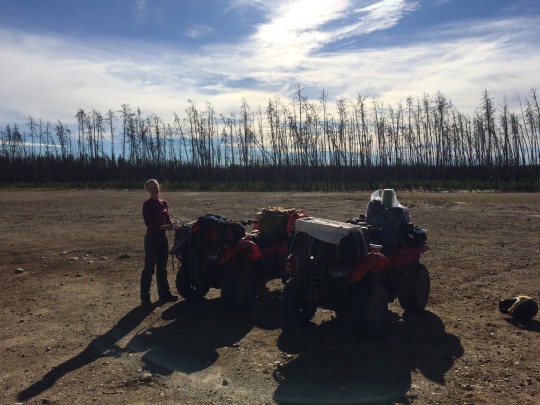
Above: RAM and ABMI botanist Varina Crisfield prepares to quad up the Fort Chipewyan winter road in August 2016 to conduct research on vascular plants and lichen.

Above: Crisfield takes a coffee break while quadding up the Fort Chipewyan winter road.
Quaternary Environments (Hinton, Alberta)
Britta Jensen (below, in red) and Alwynne Beaudoin (below, in yellow) conducted research and collected samples in the Hinton area in September 2016. They were looking for layers of volcanic ash, or tephra, preserved in the sediments. These show up as thin white bands in the section. The ash is from an eruption from Mount St. Helen’s, Washington, about 3,600 years ago. The Hinton area is one of the most northerly locations where this ash has been identified as a visible layer. Volcanic eruptions and their effects on modern and ancient landscapes will be featured in the new natural history gallery.

Invertebrate Zoology (Utah, USA)
Matthias Buck, assistant curator of invertebrate zoology, spent time on the Colorado Plateau near Moab, Utah (pictured below) searching for a rare local population of paper wasps. Paper wasps have been studied extensively for their intriguing social behaviours, and new species are still being discovered in North America! The new museum will feature a live colony of paper wasps, the first museum display of its kind worldwide!
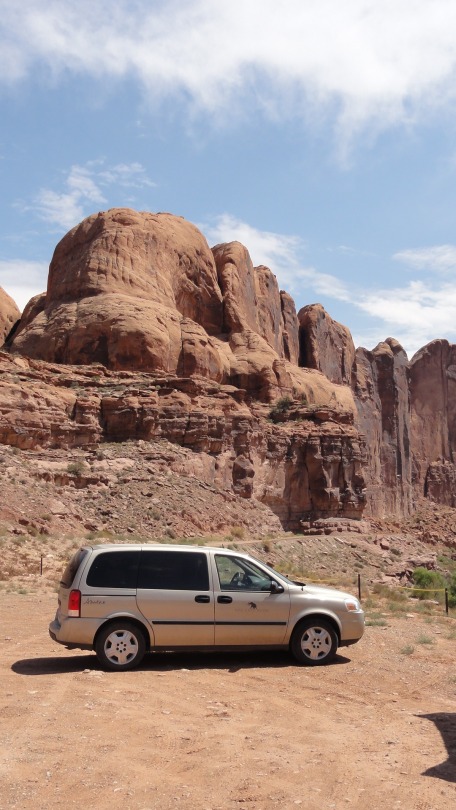
Cultural Communities (Falher and Lac La Biche, Alberta)
Falher
In the summer of 2014, Matt Levitt (assistant curator of cultural communities) conducted research about beekeeping and the honey industry in northern Alberta’s francophone communities, for an exhibit that you’ll see in the new museum. While he was there, the community was celebrating its annual Honey Festival (pictured below).



Lac La Biche
In the fall of 2014, Levitt also travelled to Lac La Biche (pictured below) to do field research and collecting for a display in the new museum about Lebanese-Canadians’ role in Alberta’s fur trade history. “I’d never been to Lac La Biche before and was impressed by the massive lake and how beautiful it was under autumn leaves and stormy skies. The lake was crucial for mink ranching as it provided fish to feed the mink and ice to cool the fish,” Levitt says.
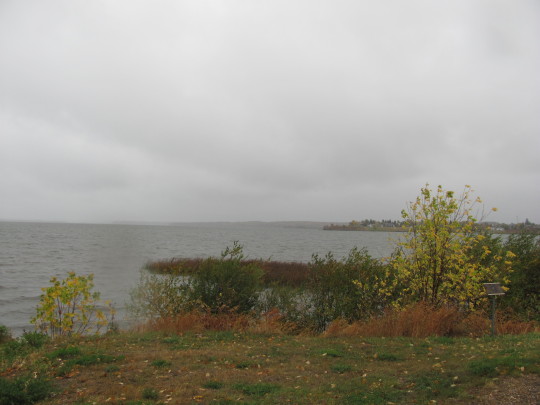
Botany (southeastern Manitoba, Lac la Biche, Alberta and Rumsey Natural Area in Alberta)
Manitoba
Richard Caners, curator of botany, examines mosses and liverworts growing on a rock outcrop in southeastern Manitoba. Richard is currently undertaking a study on the bryophyte flora of the Great Lakes–St. Lawrence forest region of this unique part of the province.


Lac la Biche, Alberta
Speckled greenshield (Flavopunctelia flaventior, pictured below) is one of 15 lichens that will be on display in the new museum, showing the diversity of the five groups of lichens found in Alberta. Speckled greenshield is a foliose lichens. It is leafy and has distinct lobes. This specimen was collected near Lac la Biche by Donna Cherniawsky (assistant curator of botany).

Credit: Roxanne Hastings
Roundleaf sundew (pictured below) is one of several carnivorous plants in Alberta’s boreal forest. It grows in environments that lack the nutrients it needs to survive so it gets its nutrition in another way: by luring and trapping insects with the sticky droplets on its leaves. The droplets contain digestive enzymes that break down the insect’s body. The display at our new museum is accompanied by a terrarium with living sundews.

Credit: Roxanne Hastings
Rumsey Natural Area in Alberta
Grasslands are more than just grasses. An exhibit in the new museum will showcase six different non-grass plants that are an important component of Alberta’s grasslands, including spike-moss (Selaginella densa, below). Spike moss is not a moss at all; it is closely related to ferns. The long white bristles at the tip of each leaf help protect the plant from moisture loss and from the sun’s damaging ultraviolet radiation.
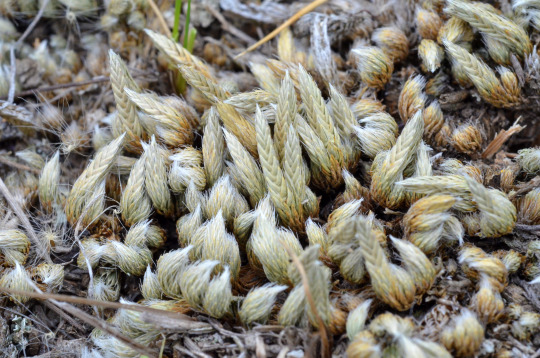
Credit: Richard Caners
Quaternary Environments (Bow River Watershed)
In 2016, the Quaternary Environments team (pictured below) collected samples for the flood sample project in the Bow River Watershed.
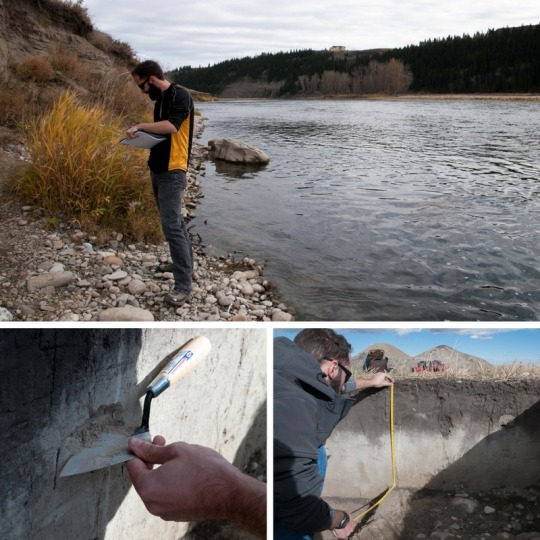
Mammalogy (across Alberta)
Southwestern Alberta
Assistant curator of mammalogy Bill Weiman (pictured below) travelled to the slopes of Plateau Mountain in southwestern Alberta in search of American pika, hoary marmots, and golden-mantled ground squirrels, as part of mammalogy’s program to document the distribution of Alberta’s mammals.
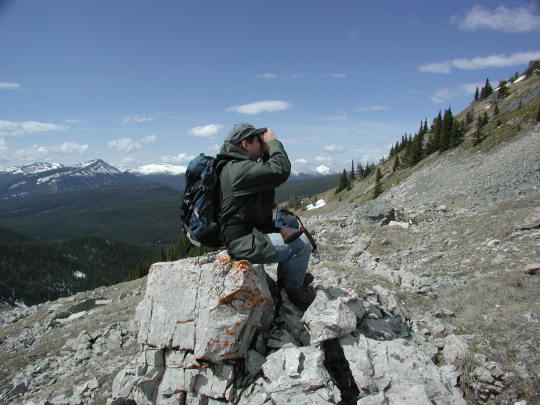
West-central Alberta
Mammalogy assistant Corey Smereka (pictured below) listens for a signal from a collared cougar before going to a possible prey site in west-central Alberta. The mammalogy program is doing research on cougars’ movements and the survival of female cougars and their kittens.

Credit: Mark Edwards
North-central Alberta
Kristin Panylyk, former museum interpreter, and Jordanne Taylor, mammalogy summer field assistant, examined small mammal community ecology and fire succession in the semi-forested sand hill habitat of north-central Alberta. In the photo below, they are ear-tagging a deer mouse.
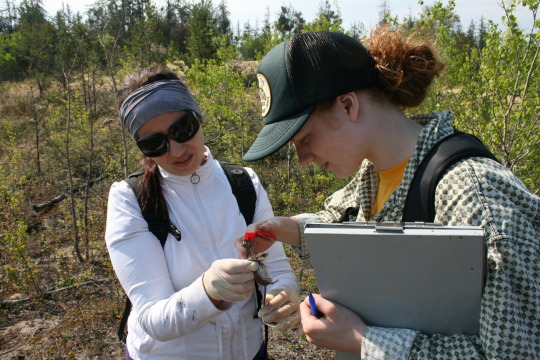
Credit: Mark Edwards
Alberta Grasslands
Bill Weiman and Dr. Mark Edwards, curator of mammalogy, travelled to Alberta grasslands (pictured below) in search of pronghorn. Two new pronghorn displays will be featured in the new museum.
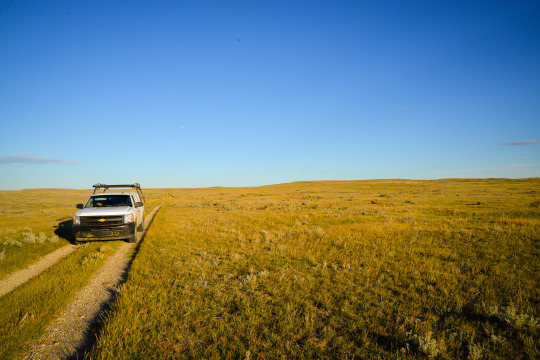
Credit: Mark Edwards
Ronald Lake area (north-eastern Alberta)
Mark Edwards (pictured below in the back of an A-Star helicopter) conducted research on wood bison in the Ronald Lake area.
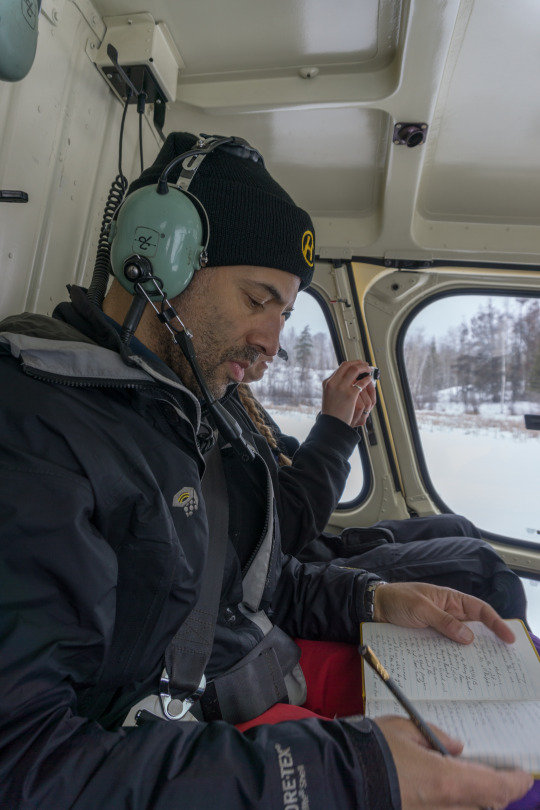
Credit: Scott Nielsen
As part of his research, Edwards (below) also installed a camera trap to record the presence of wood bison and predator activity.
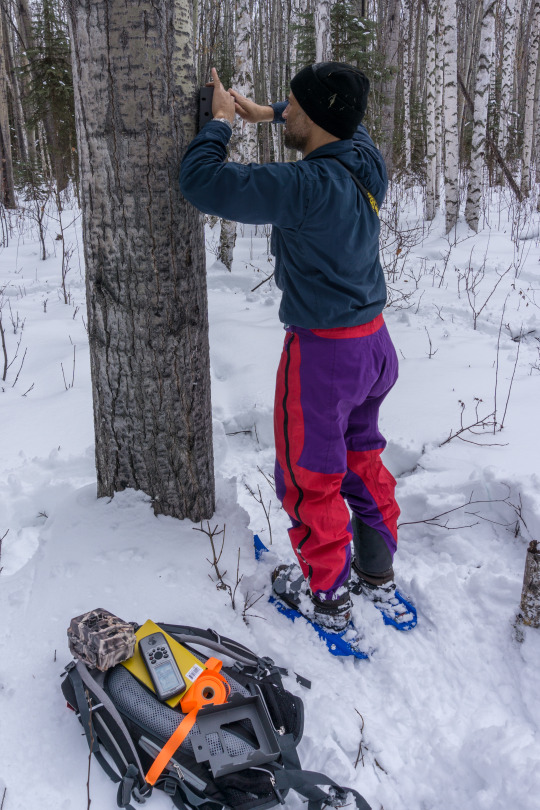
Credit: Scott Nielsen
Learning Team (Head-Smashed-In Buffalo Jump, Alberta)
To reveal the behind the scenes work of the museum and bring it to life for our visitors, our Learning and Programming Team actively pursues hands-on experiences with our conservation, design, curatorial teams and other departments. They will bring this experience to the tours, workshops and other hands-on activities that will be offered in the new museum. Here, they are a assisting Bob Dawe, Assistant Curator of Archaeology, with an excavation at Head Smashed-In Buffalo Jump.
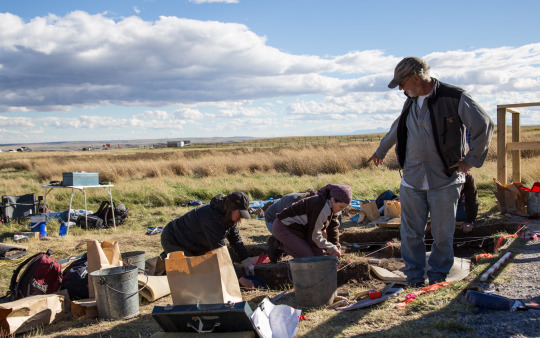

Quaternary Palaeontology (South Dakota, USA)
Curator of Quaternary palaeontology Dr. Chris Jass (below) travelled to South Dakota to conduct field work. Part of his work involved excavating an entrance to an Ice Age Cave deposit.
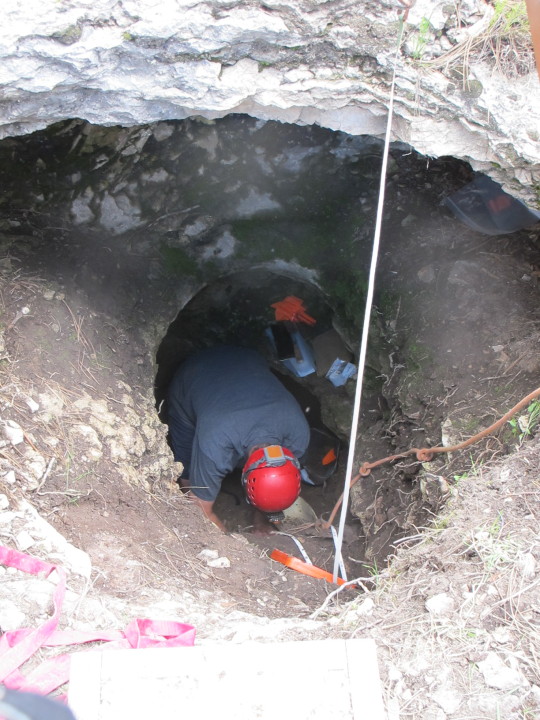
Geology (northeastern Alberta, Waterton, and Hokkaido, Japan)
North-eastern Alberta
Learning team member Sean MacQueen (pictured below) went on a geological field excursion to the Canadian Shield exposed in northeastern Alberta. This was part of a trip to collect material an exhibit in the new museum. Tagging along with curatorial staff during field work excursions is a great way to exchange information with the learning team and give them real-world experience that educators can use in program development and delivery.
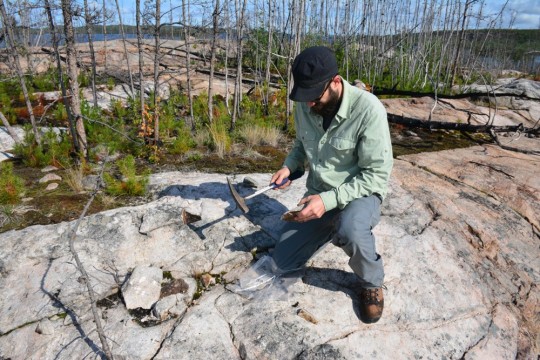
Waterton, Alberta
Shauna Coombs and Daniel Francis (below) travelled to north of Waterton National Park. The rocks they are standing on are 1.4 billion years old! These are some of the oldest rocks exposed in the Rocky Mountains. Some of the volcanic rocks collected on this trip (pillow basalts) will be on display in the new museum.
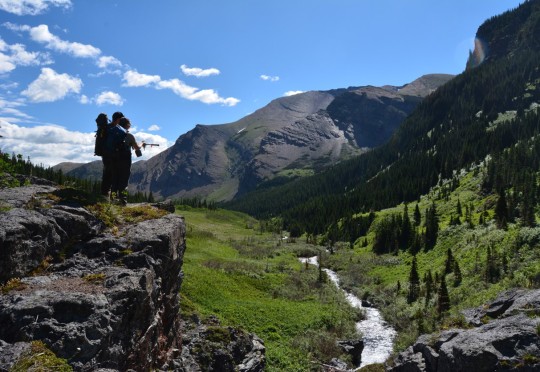
Hokkaido, Japan
Melissa Bowerman, assistant curator of geology, went to Japan on an exchange with the Hokkaido Museum. During her visit, she was able to collect an exceptionally rare metamorphic rock for our museum’s collection from this trip: a blueschist. You will see it on display in the new museum. In the photo below, she is in the field with a curator from the Hidaka Mountain Museum, examining metamorphic rocks.
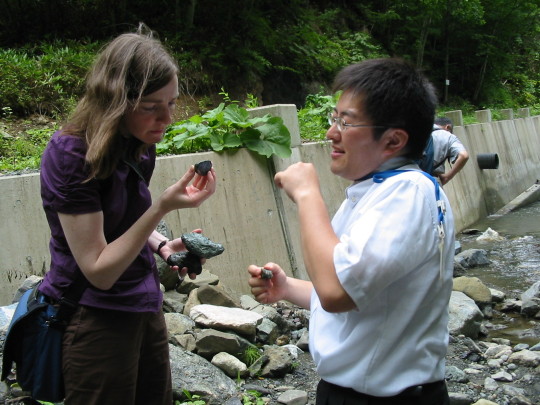
On the same trip, Bowerman (below) also examined a section of pumice (a volcanic rock).

#Royal Alberta Museum#museumweek#natural history#alberta#human history#edmonton#calgary#travel#travel alberta
0 notes